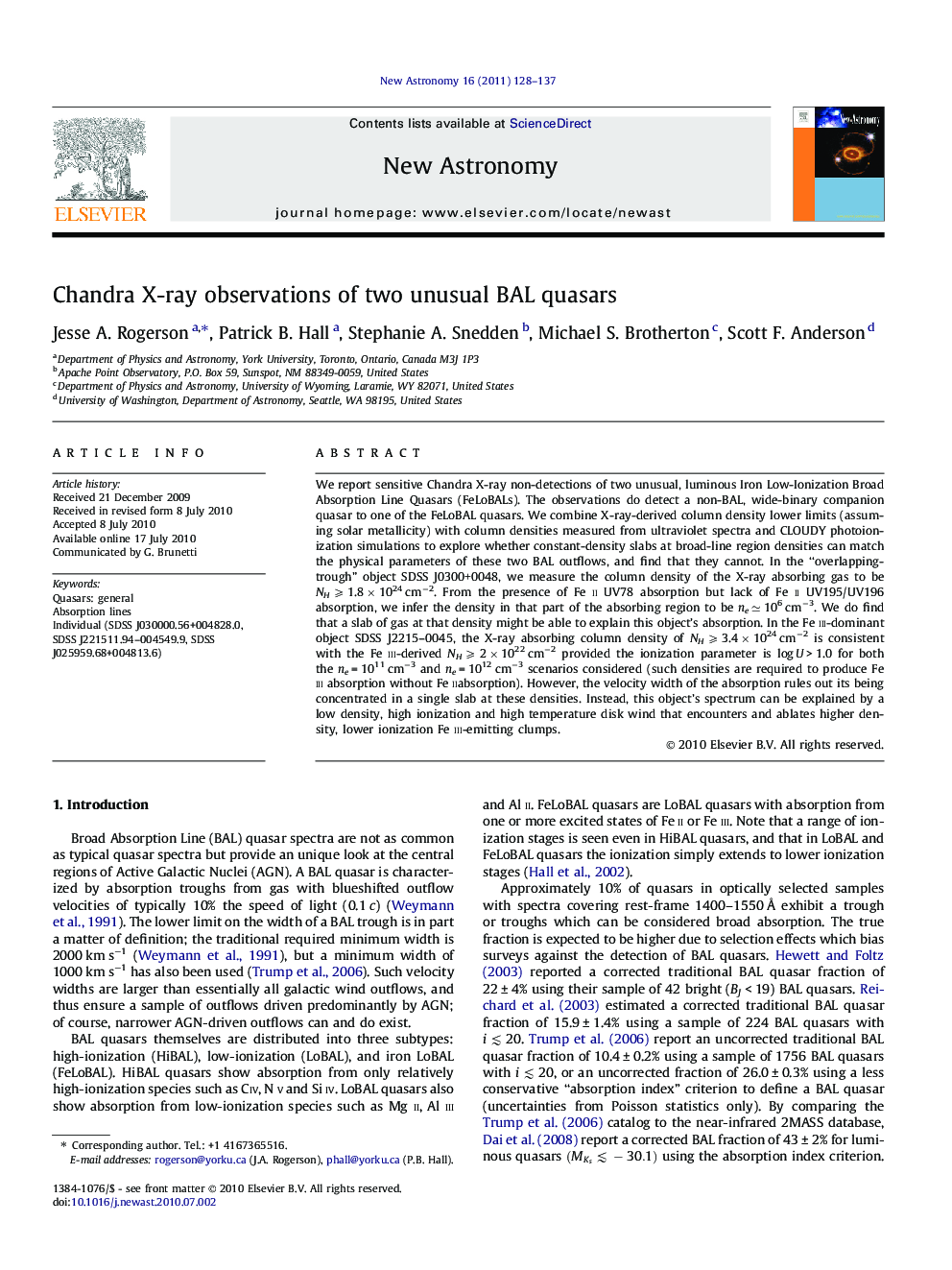| Article ID | Journal | Published Year | Pages | File Type |
|---|---|---|---|---|
| 1779433 | New Astronomy | 2011 | 10 Pages |
We report sensitive Chandra X-ray non-detections of two unusual, luminous Iron Low-Ionization Broad Absorption Line Quasars (FeLoBALs). The observations do detect a non-BAL, wide-binary companion quasar to one of the FeLoBAL quasars. We combine X-ray-derived column density lower limits (assuming solar metallicity) with column densities measured from ultraviolet spectra and CLOUDY photoionization simulations to explore whether constant-density slabs at broad-line region densities can match the physical parameters of these two BAL outflows, and find that they cannot. In the “overlapping-trough” object SDSS J0300+0048, we measure the column density of the X-ray absorbing gas to be NH ⩾ 1.8 × 1024 cm−2. From the presence of Fe ii UV78 absorption but lack of Fe ii UV195/UV196 absorption, we infer the density in that part of the absorbing region to be ne ≃ 106 cm−3. We do find that a slab of gas at that density might be able to explain this object’s absorption. In the Fe iii-dominant object SDSS J2215–0045, the X-ray absorbing column density of NH ⩾ 3.4 × 1024 cm−2 is consistent with the Fe iii-derived NH ⩾ 2 × 1022 cm−2 provided the ionization parameter is log U > 1.0 for both the ne = 1011 cm−3 and ne = 1012 cm−3 scenarios considered (such densities are required to produce Fe iii absorption without Fe iiabsorption). However, the velocity width of the absorption rules out its being concentrated in a single slab at these densities. Instead, this object’s spectrum can be explained by a low density, high ionization and high temperature disk wind that encounters and ablates higher density, lower ionization Fe iii-emitting clumps.
